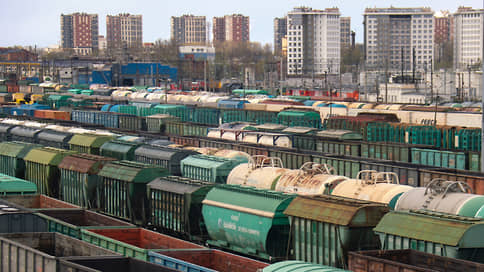IPEM estimated budget losses from infrastructure restrictions at 2.8 trillion rubles per year
[ad_1]

According to IPEM, if the railway infrastructure did not limit the development of the economy, the cargo base of the Russian Federation could increase by 400 million tons by 2030, and railway exports by 180 million tons. The institute is calling for more ambitious infrastructure plans. Today, they plan to invest 4.3 trillion rubles in the development of the railway backbone network. until 2030, increasing transport capacity by approximately 143 million tons. But experts doubt that these forecasts will be realized, as well as that the wishes of shippers will not change under the influence of fluctuating market conditions.
According to IPEM, in the absence of infrastructure restrictions on the railway, the freight base in the Russian economy could increase by 400 million tons. IPEM General Director Yuri Sahakyan announced this while speaking at the forum “Mining Industry: Investment Projects and Support Measures.” Thus, as follows from his presentation, coal production in 2030 should amount to 524.4 million tons (20.6% more than in 2022), petrochemical products – 805.5 million tons (7.9%), construction materials – 405 million tons (by 18.1%) and so on. Without infrastructure restrictions, budget revenues from 2030 in the form of additional taxes would increase by no less than 2.8 trillion rubles. annually.
Export of goods by rail, IPEM calculated, could increase by 180 million tons. The main increase when infrastructure restrictions are lifted comes from coal, the export of which could grow by 32.2% (or 63.8 million tons) by 2030, amounting to 261.6 million tons. The second category is containerized cargo, the export of which could increase by 190%, to 46.4 million tons, which, given that the container is light, means an increase of 1.8 million TEU of loaded containers in export traffic. In 2023, the average monthly export of cargo in containers by rail amounted to 129.4 thousand TEU, which gives about 1.55 million TEU at the end of the year. Also significantly – by 190%, or 19.8 million tons – could increase export transportation of grain and grinding products, by 79.1%, or 21.6 million tons; – fertilizers, by 22.4%, or 17. 2 million tons of oil and petroleum products.
As explained in IPEM, under-delivery of goods arising from the persistence of a shortage of transportation capacity until 2030 inclusive (taking into account existing development programs) will lead to lost income, which could amount to about 1.2 trillion rubles. by GDP and 0.4 trillion rubles. revenues of the consolidated budget of the Russian Federation. “For economic growth, more ambitious plans for the development of railway infrastructure are needed,” they summarize.
Today, the national project “Development of Transport Infrastructure” involves investments in the development of the railway backbone network in the amount of 4.32 trillion rubles. in 2025–2035. With these funds, the total carrying capacity of the Eastern landfill should increase by 2030 from 180 million tons in 2024 to 210 million tons in 2030, approaches to the ports of the Azov-Black Sea Basin (ASB) – from 125.1 million to 152 million tons, the corridor North-South – from 8 million to 20 million tons, and approaches to the ports of the North-West – from 145.6 million to 220 million tons. The latest program includes the development of approaches to the Murmansk transport hub up to 45 million tons and to the Baltic ports up to 175 million tons, and such an increase is possible, judging by the materials for the program, only subject to the implementation of the Moscow-St. Petersburg high-speed highway project and the switching of freight traffic on the main course of the Oktyabrskaya Railway.
President of the National Research Center for Transportation and Infrastructure Pavel Ivankin notes that the actual volume of transportation has never been included in strategic forecasts based on deflator indices of the Ministry of Economy. Not a single crisis was included even in the pessimistic development forecast. “If we had known in 2016 that we would have such a year in 2022, different decisions would probably have been made,” he says. “In addition, the infrastructure has always developed evenly: the Eastern training ground, the North-West, and the AChB. If you now listen to what they are saying at various sites, namely that we will not have any export routes in the near future except for the Eastern site, you need to understand whether you should invest in the development of the North-West and the AChB.” And if only the Eastern range is developed, the expert continues, then in order to achieve the indicators outlined by IPEM, it is also necessary to develop the South Ural, Sverdlovsk, and West Siberian railways, which entails the need for additional investments. In addition, he notes, even the presence of transportation capacity does not always solve the problem: an example is the port of Taman, where there is capacity, but cargo does not travel. And the cargo base that shippers claim is not built on ship-or-pay principles and can change many times under the influence of market conditions, Mr. Ivankin concludes.
[ad_2]
Source link





